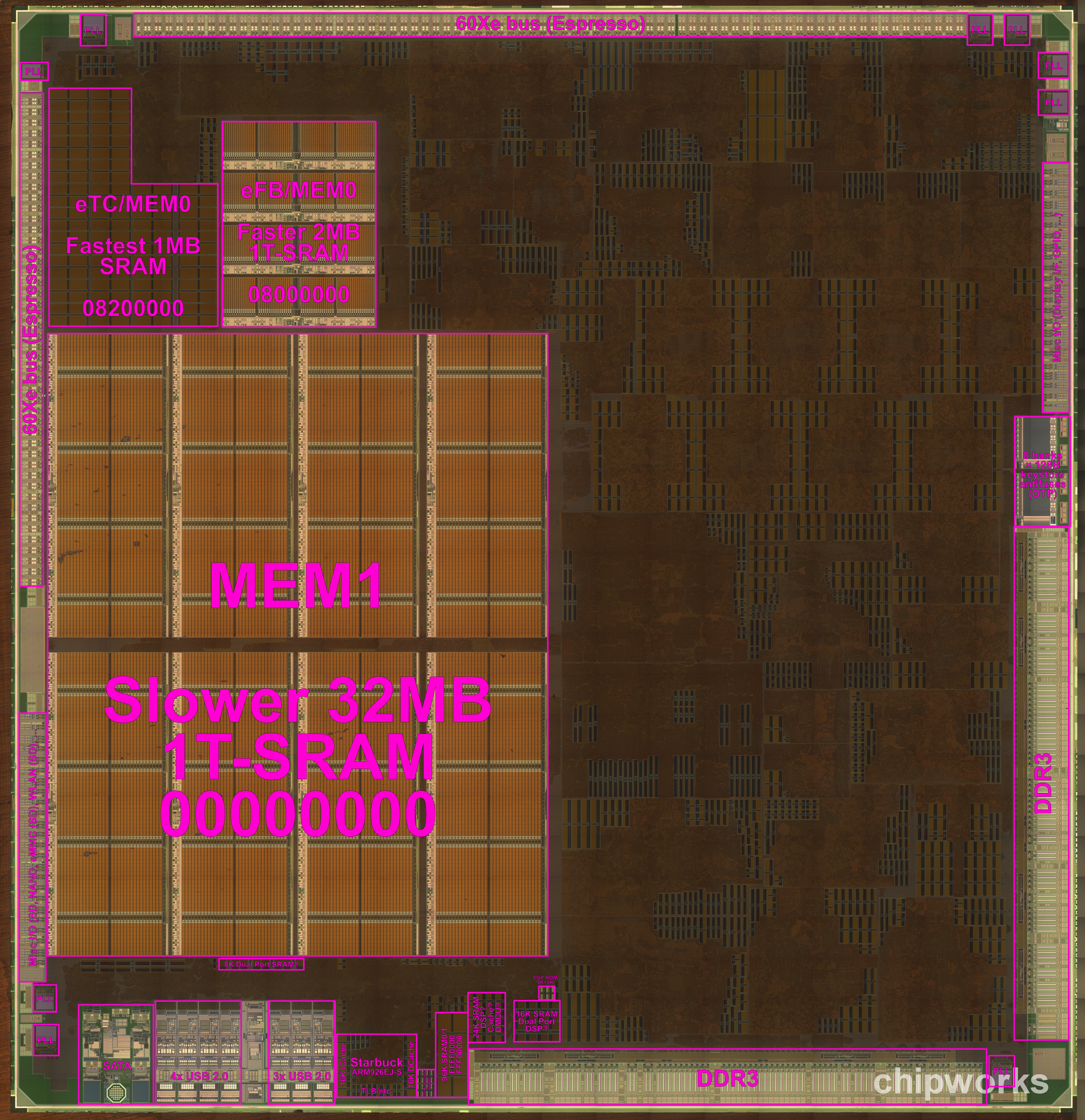"Looking", "looking", "looking" I keep seeing this word "looking". I'm not about looks. I'm speaking in a technical sense, not a preferential(what I/you find most impressive) sense.
I think you fail to see what I'm saying.
Factor 5 did some impressive manipulation of the hardware, true. But they did so by bypassing a lot of things that would decrease performance; like minesweeper, avoiding mines and molding their software around them. Hell, urban legend says dudes used the CPU to manipulate the GPU ISA (in ASM) in order to trick and inject more passes onto the TEV pipeline making it do more per cycle. They were putting every available resource after the GPU.
Flying Starwars ships have no complex animations for them, in fact they're not even on the ground so they don't have to animate in a believable way; meanwhile Zelda games uses skeletal animation, and that takes resources; Facial animations too.
Rogue Squadron 3 walking animations speak for themselves.
They had good tech, but were also doing compromises; had those compromises not be taken you would get less polygons (and probably get a better game in return, although people might call me biased for saying this; I was never their fan)
My point is, sure they pulled the most polygons. But that's not necessarily the best use of the hardware ever; Nintendo and other developers opted to pull less polygons and make games with more varied worlds, animations, AI, stuff going on. And that doesn't mean they were using the hardware in a lesser way or not pushing it.
Also bare in mind Factor 5 mindset was that of a demoscene; being playable was a plus.
Anyone could write a game to try and pull the most of something you can think of, and they'll come around as being the kings of doing it; it has merit, but it's also a pretty stupid thing to do most of the time, because you're limiting your own software in order to pull something out; meanwhile a lot of games opt for balancing, giving the adequate resources to everything and balancing from there.
Zelda TP was doing so many things at once, that Rogue Squadron didn't that the fact that it wasn't pulling the same polygons in there doesn't make it any less impressive.
Similarly, Shadow of the Colossus on the PS2 used a geometry simplification process for for away objects/areas (effectively reducing them to images), it wasn't a 10 million polygon game like Jak and Daxter or Virtua Fighter 4 yet it was more impressive than they ever were.
No game in the entire 6th generation of consoles pulled of what Rogue Leader and Rebel Strike did on the GC. No other game broke 14 million polygons per second in real time much less 20 million at 60 FPS with bump mapping, dynamic lighting and other effects. That was what I called pushing a console.
Read above.
RE4 was a great game that I loved, but it did not "push" the GC at all. Graphically, I would say the RE4 was doing more especially when it came to lighting, texture effects and animation.
http://www.youtube.com/watch?v=h_5kwX0LZAc
What? RE4 didn't push the Gamecube?
I'm seriously shocked you said that. I can't even start to argue with tech specifications and things it was doing so I'll just give it up.
RE4 was crazy graphically for the GC.
For the SNES, I was talking about Star Ocean.
That's Tri-Ace, ex-wolfteam/telenet.
Enix didn't land a line of code there.
Zangeki No Reginleiv did far more than Mario Galaxy all around. It had various levels texture effects and shading on the character, enemies and water, destructible environments, enemy dismemberment, decent physics, 4 player online multilayer and hundreds of massive individual enemies on screen at once. I'm not sure if it ran at 60 FPS(had a lot of slow down issues in huge battles) but was over usually over 30. I didn't think what that game did was possible on the Wii before I saw it.
Very different games.
I know the game. Sorry it doesn't impress me as much.
I'm not analyzing peoples opinions of the games or "how they feel". I'm not talking about what people find is visually appealing or a waste of time. What people like is irrelevant. I'm talking about the pure factual technical prowess that is achieved on the hardware and demonstrated. Pure tech.
Me neither.
I'm saying I can write a game meant to push polygons and I'll come up with a scenario when that's easier to do, namely using flying ships that barely animate (and animate in a simple robotic way), or something like Quantic Dream does, barely a game hence it doesn't have to deal with game logic; which is like saying that tech demo's manage to have more resources for them because there's no game logic or how cutscenes pump the graphics up... again because game logic is simplified or gone; rogue squadron games were only complex on the things Factor 5 were doing on top, on a barebones analysis they were awfully simple; it's precisely the arguments you're making for Zangeki; it's not a polygon pusher of any sorts because it's doing a lot o things; just like TP did on the GC, or Shadow of the Colossus did on the PS2; it's impressive because it's an all rounder if you will.
Nintendo will always go for the all rounder, they're never ones to pull all the bullets in one place (polygons or whatever).






